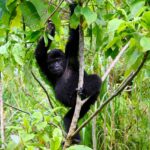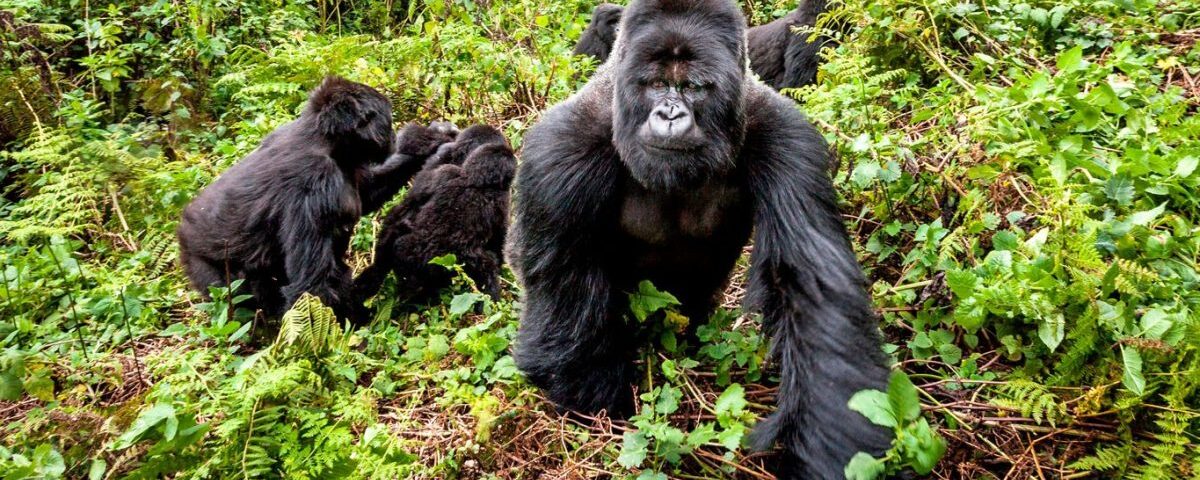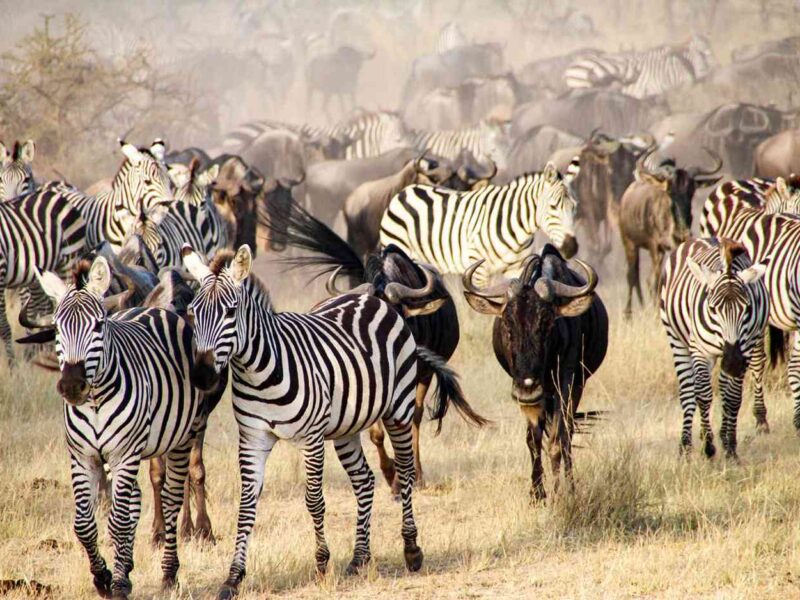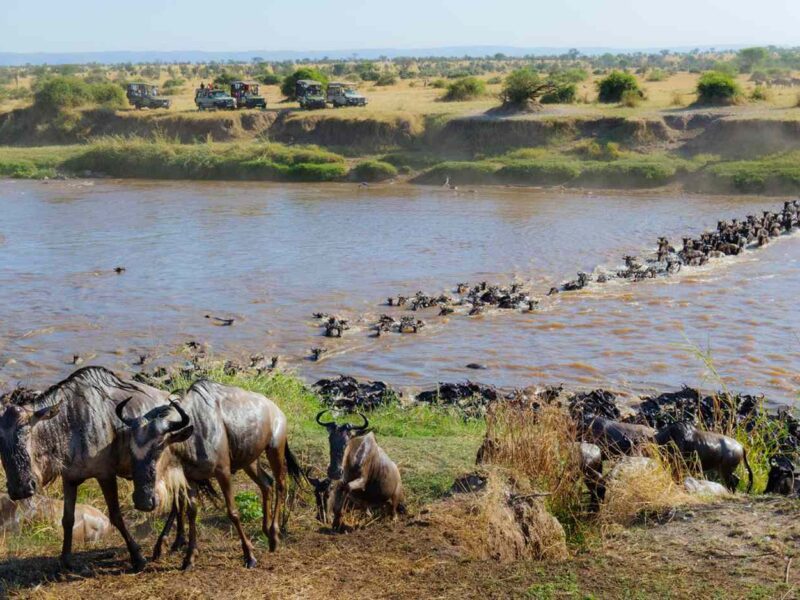
Which Season is Best for Gorilla Trekking?
April 2, 2025
Is Gorilla Trekking Expensive?
April 4, 2025Do Silverback Gorillas Eat Meat?
Silverback gorillas, the dominant male members of gorilla groups, are among the most fascinating creatures in the animal kingdom. With their impressive stature, complex social structure, and gentle behavior, silverbacks have captured the imagination of many wildlife enthusiasts and researchers. While their behaviors are widely studied, one question that continues to intrigue both laypeople and scientists alike is whether these mighty primates, despite their formidable size and strength, ever consume meat. This article delves into the eating habits of silverback gorillas, the rarity of meat consumption in their diet, and how their evolutionary characteristics shape their nutritional choices.
The Herbivorous Nature of Silverback Gorillas
Silverback gorillas, scientifically classified as Gorilla gorilla, are predominantly herbivores, meaning their diet mainly consists of plant material. The majority of their food intake comes from leaves, stems, bamboo shoots, tree bark, roots, and various fruits. They are particularly adept at foraging in their natural habitat in the dense rainforests of Central Africa, where these plant-based foods are abundant.
As adult males, silverbacks are responsible for leading their groups, and their role within the ecosystem largely revolves around maintaining a diet that supports their large, muscular physique. On average, a silverback gorilla can consume between 30 to 40 kilograms (66 to 88 pounds) of vegetation daily. Their digestive system is highly specialized for processing this plant matter, with a large stomach and a gut adapted to ferment cellulose-rich materials, such as leaves and fibrous plant stems.
The Anatomy of a Herbivore: Adaptations for a Plant-Based Diet
Gorillas possess several physical adaptations that reflect their herbivorous nature. Their broad, strong jaws and large molars are perfect for grinding tough vegetation. Their digestive system is complex and designed for fermenting plant fibers, enabling them to break down tough plant material and extract the nutrients necessary for survival.
Unlike carnivorous animals, silverback gorillas lack the sharp canines and specialized digestive systems that are required for efficiently processing animal protein. They do not have the physical traits typically associated with meat-eating species, such as short intestines or acidic stomachs designed for the digestion of animal tissue. Therefore, it is highly unlikely that silverbacks would actively seek out meat as a significant food source.
Occasional Meat Consumption: Rare and Opportunistic
While silverback gorillas are primarily herbivorous, there have been rare instances of them consuming small amounts of animal matter. However, these occurrences are not common and are generally classified as opportunistic rather than habitual. Gorillas in captivity, in particular, may sometimes display behaviors that deviate from those seen in the wild, including the consumption of animal-based food. In such cases, it is often driven by factors like boredom, lack of sufficient plant-based food, or environmental stress rather than a natural inclination toward meat consumption.
In their wild habitat, silverbacks may come across insects, small invertebrates, or even bird eggs while foraging for food. On occasion, they may consume these animals, but such incidents are extremely rare. Researchers have observed silverbacks interacting with insects or small animals, but these are incidental encounters rather than part of an intentional hunting or carnivorous behavior.
Does Meat Play a Significant Role in Their Diet?
The role of meat in the diet of silverback gorillas is minimal at best. Their digestive systems are not suited for processing animal matter on a regular basis, and any meat consumption is typically incidental. The vast majority of their diet consists of plant materials, and their energy needs are primarily met through vegetation. Although there are occasional reports of gorillas eating insects or small animals, these instances are outliers and do not represent a regular dietary trend. It is crucial to note that gorillas do not actively hunt, and they are not carnivores in the traditional sense.
Their plant-based diet provides the necessary nutrients for gorillas to maintain their massive size, strength, and overall health. Foraging for fruits, leaves, and stems ensures they receive essential nutrients such as fiber, carbohydrates, vitamins, and minerals. A balanced herbivorous diet helps them avoid the potential health issues that could arise from a diet rich in animal protein, such as digestive problems or nutrient imbalances.
Evolutionary Factors: Why Gorillas are Not Predators
Silverback gorillas are descendants of an evolutionary lineage that has been primarily herbivorous for millions of years. This long-standing evolution has equipped them with the anatomical and physiological tools to thrive on a plant-based diet. Unlike carnivores, who rely on a meat-heavy diet to sustain themselves, gorillas have evolved in an environment where plant matter is abundant and sufficient for their needs.
Additionally, gorillas lack the social structures and predatory behaviors that are common in carnivorous species. While they exhibit complex social dynamics within their groups, including leadership roles, cooperative parenting, and territoriality, they do not engage in hunting or hunting-related behaviors. Instead, their social organization is based on protecting and nurturing their group, foraging for plant-based food, and ensuring the safety and well-being of their young.
Environmental and Ethical Considerations
In the wild, gorillas have evolved to live in environments where they can access a variety of plant-based food sources. These dense rainforests provide the perfect conditions for gorillas to thrive, with a diverse range of fruits, leaves, and other vegetation. However, human activity, deforestation, and habitat loss have disrupted many gorilla populations, making it more difficult for them to find the food they need to survive. This highlights the importance of conservation efforts to protect the gorilla’s natural habitat and ensure that their food sources remain abundant.
In captivity, gorillas often face dietary restrictions that can lead to abnormal feeding behaviors. When gorillas are provided with meat, it is typically done for enrichment purposes or as part of their caretakers’ attempts to meet nutritional needs. However, this practice is not in line with their natural diet and can have unintended consequences on their health and behavior.
Conclusion: A Primarily Herbivorous Diet
In conclusion, silverback gorillas are primarily herbivores, with their diet consisting mostly of plant materials such as leaves, fruit, bamboo, and tree bark. While there are rare instances of silverbacks consuming small amounts of animal matter, this is not a regular or significant aspect of their diet. The physical and anatomical adaptations of gorillas support a plant-based diet, and any consumption of meat is incidental, opportunistic, and not part of their evolutionary behavior.
As wildlife enthusiasts and conservationists at Ovacado Adventures Ltd., we strive to protect the natural habitats of these incredible creatures and ensure that they can continue to thrive in the wild. Understanding the dietary needs and behaviors of gorillas is crucial for their conservation and for promoting a deeper appreciation of their role in the ecosystem.





